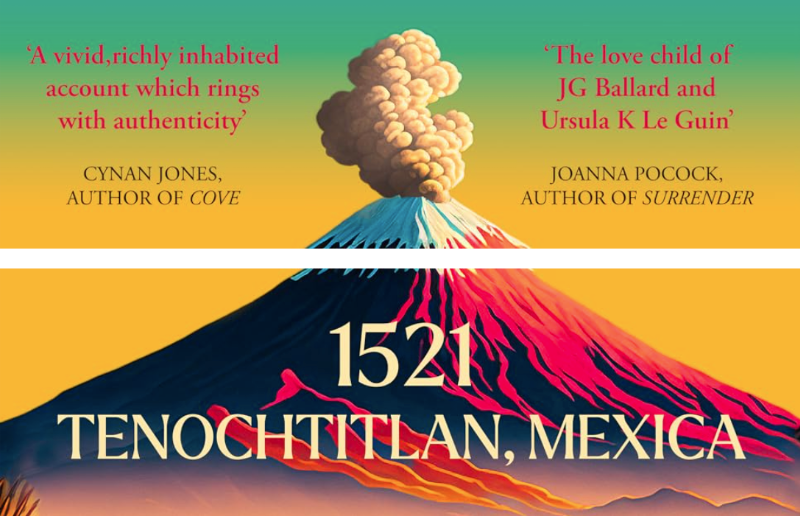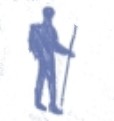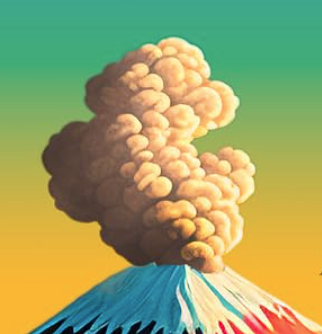To mark the paperback launch of my debut novel Red Smoking Mirror, here’s a quick visual tour of the novel’s alternate world.

In this alternate history, the Christians never reconquered Spain, and the Caliphate of Andalus extends across Iberia. In 1492, the Jewish merchant Eli Ben Abram leads a Moorish trading fleet across the Sea of Darkness to the New Maghreb.

Three decades on, Eli has made his wealth in xocolatl beans, and lives in the great Mexica capital Tenochtitlan. This lovely map (by Sue Gent) is based on early Spanish depictions of that wondrous city, built on an island in a lake surrounded by mountains.


Here’s another early Spanish map. In one chronicler’s words:
“These great towns and shrines and buildings rising from the water, all made of stone, seemed like an enchanted vision from the tale of Amadis. Indeed some of our soldiers asked whether it was not all a dream.”
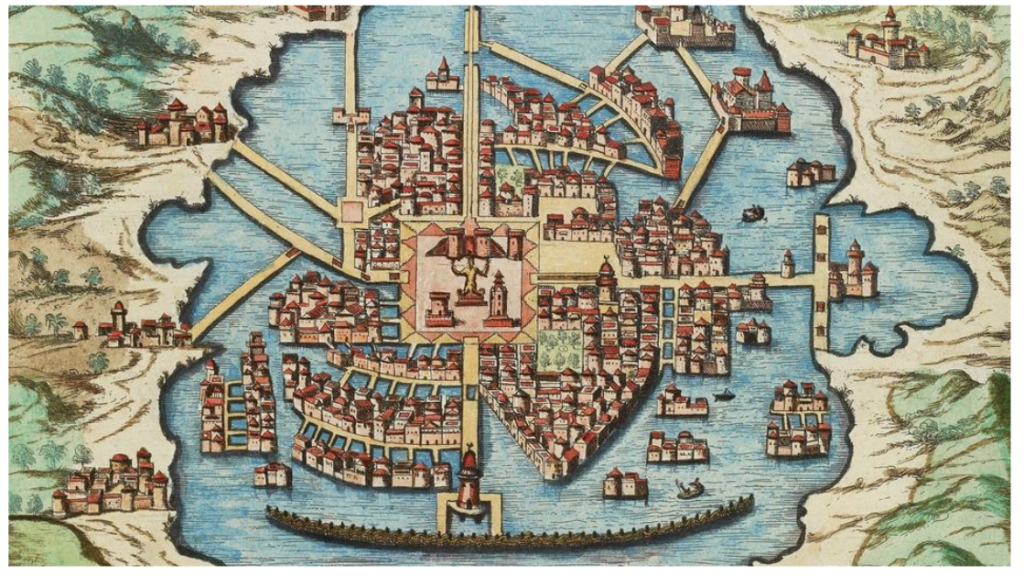
My own vision of Tenochtitlan – which now lies under Mexico City, its lake drained, its temples destroyed – was partly inspired by this painting by Luis Covarrubias. Writing was my way of walking the streets of that city, alongside its shining lake and intricate canals…
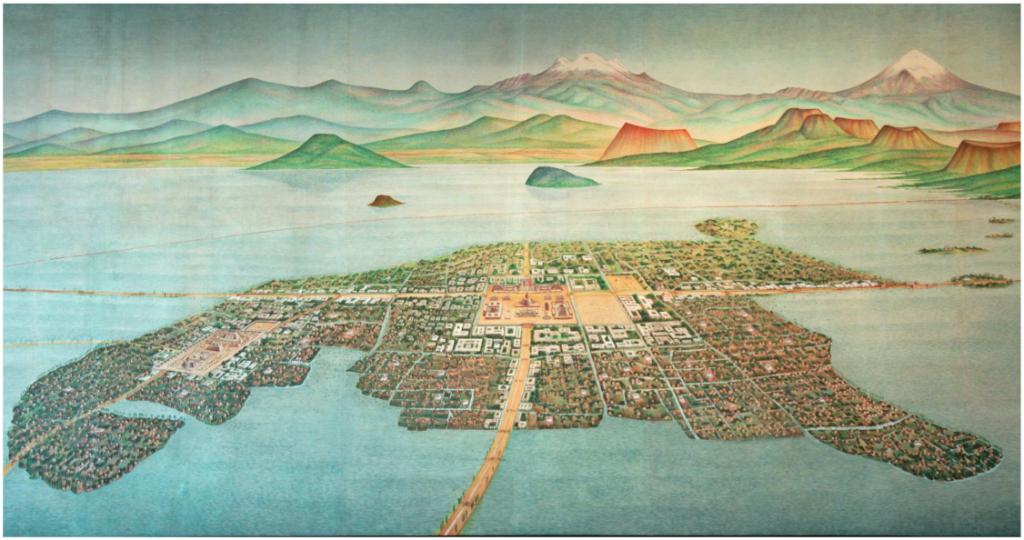
The novel also owes a debt to Diego Rivera, whose murals teem with the complexity, richness and sophistication of Mexica civilisation.
This is the cultural melting-pot that my character Eli falls in love with, to which he dedicates his life. But dark doings are afoot…
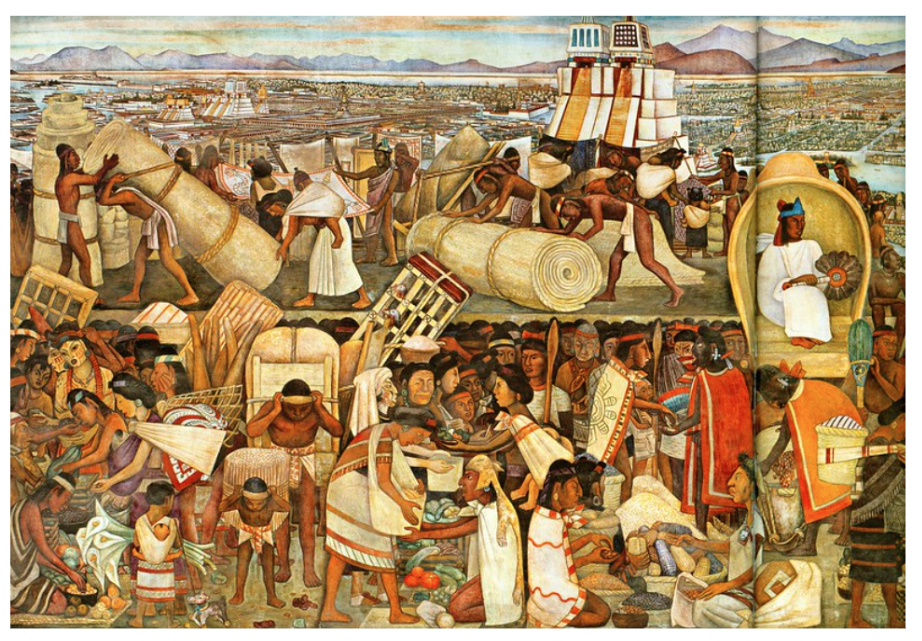
The novel’s other main character is Eli’s wife Malinala, a Nahua woman who has achieved great power and influence.
She is based on the fascinating, divisive figure of La Malinche, interpreter to Hernán Cortés. I wrote about her in this piece for Bookanista.

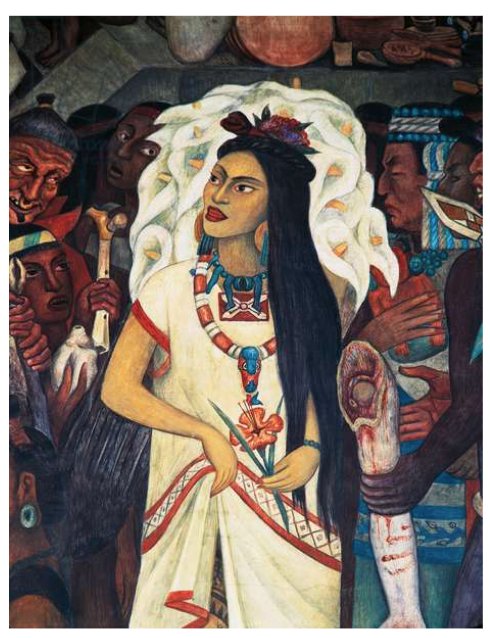
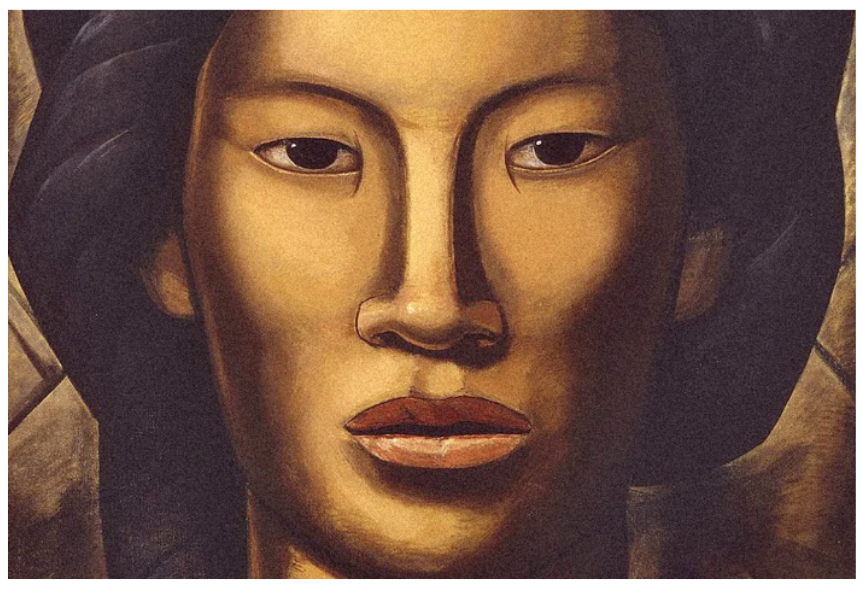
Another visual source for the novel were the Mexica (Aztec) codices, painted shortly after the conquest by Indigenous chroniclers. They show the eagle and jaguar ‘knights’ who fought in the Flower Wars, gathering captives for sacrifice…
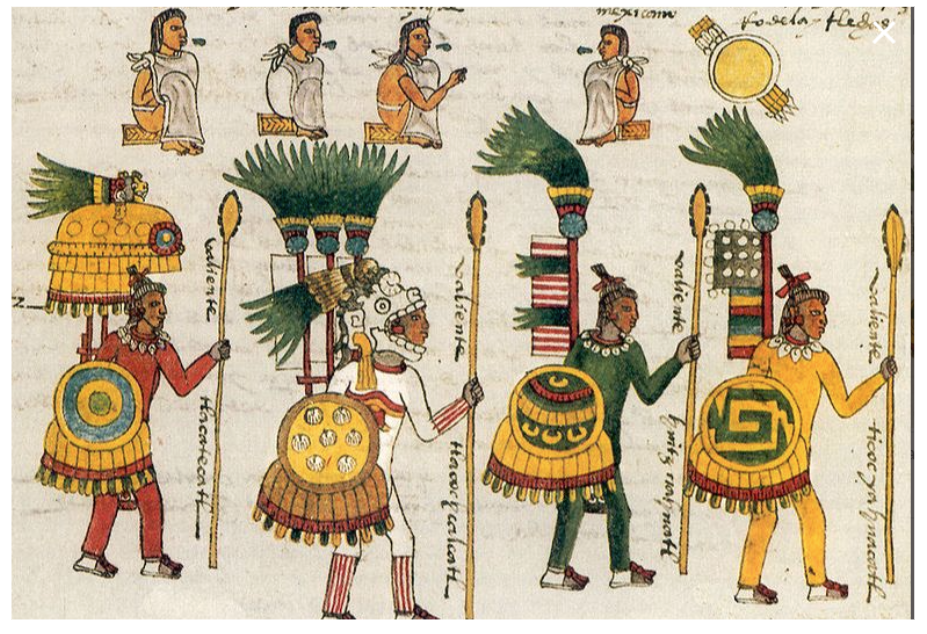
… and tell the story of the invasion from the point of view of the Tlaxcalans and other enemies of the dominant Mexica. If you look closely at some of these panels you will see La Malinche/Malinala’s hand.

Another inspiration was the culture of medieval al-Andalus – in which Muslims, Jews and Christians coexisted for centuries – and its legacy of philosophy, science, art and architecture, like the Mosque-Cathedral at Qurtubah (Cordoba) with its forest of stone columns.
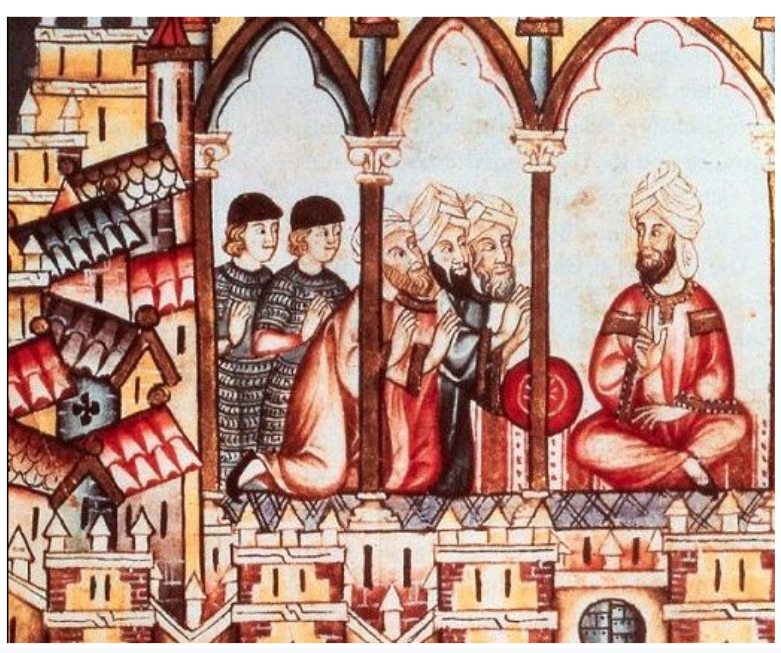
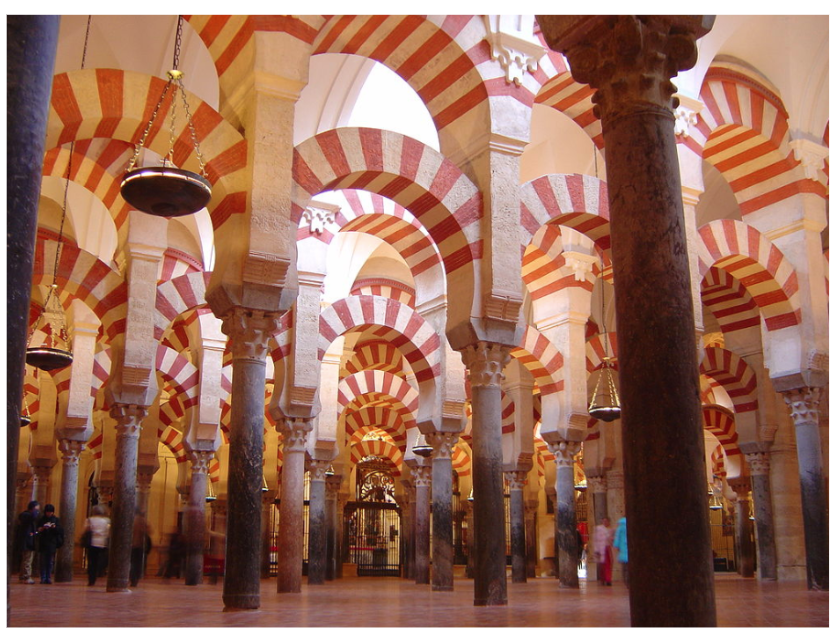
The Mexica emperor Moctezuma also appears in the novel, brooding in the mysterious chamber known as the Black House. But he has been acting strangely, sickness is spreading through the city, and there are rumours of a hostile army crossing the sea…

Backgammon is a theme of the book – Eli has taught Moctezuma to play – but I couldn’t find a backgammon pic, so here is an Andalucian Jew and a Moor playing chess.

Strange creatures abound in this world! Here be Mexican hairless dogs and mysterious water gods…
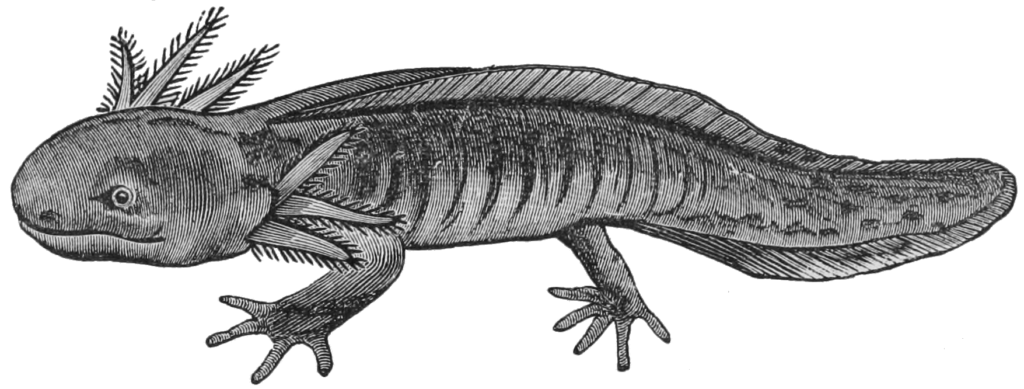
Finally here’s an image of the god Tezcatlipoca – the (Red) Smoking Mirror of the novel’s title. Smoking Mirror was the god of the night sky and prophecy, but the term was also used for the polished obsidian discs used as dark, distorting mirrors and tools of divination.
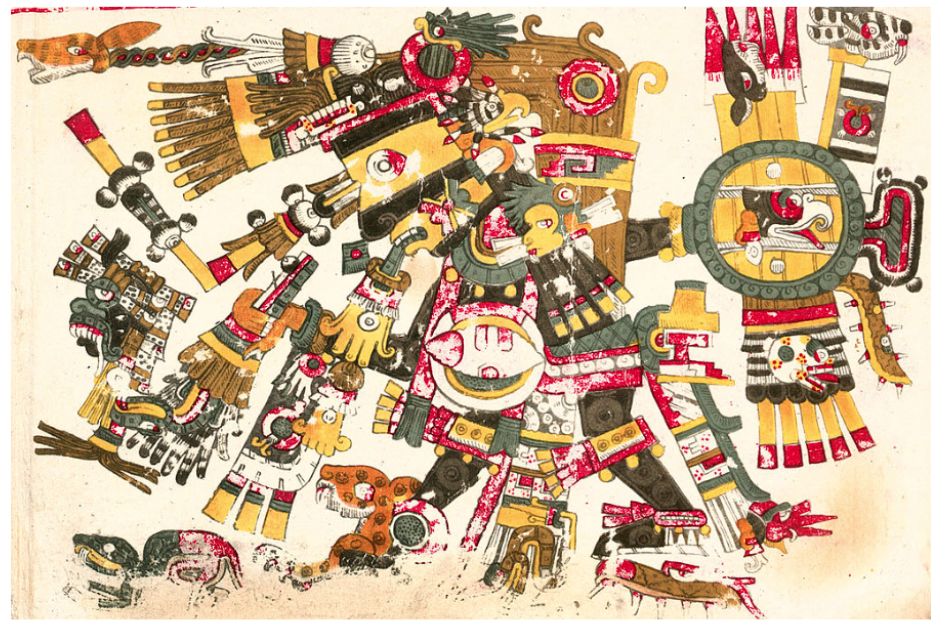
“A beautifully written evocation of a world that never was.” (Guardian)
“Full of shadowy secrets and intimate betrayals.” (FT)
“The reader wanders through Hunt’s richly imagined Tenochtitlán in a beautiful stupor.” (TLS)
Out now in paperback from Swift Press!
